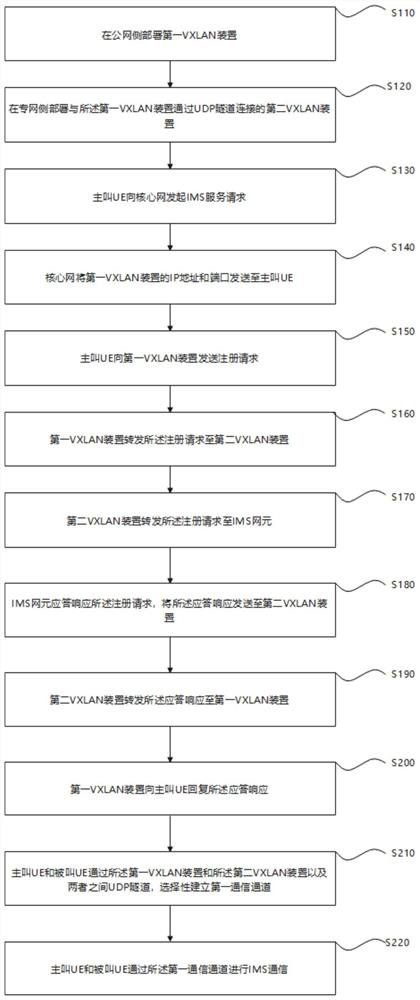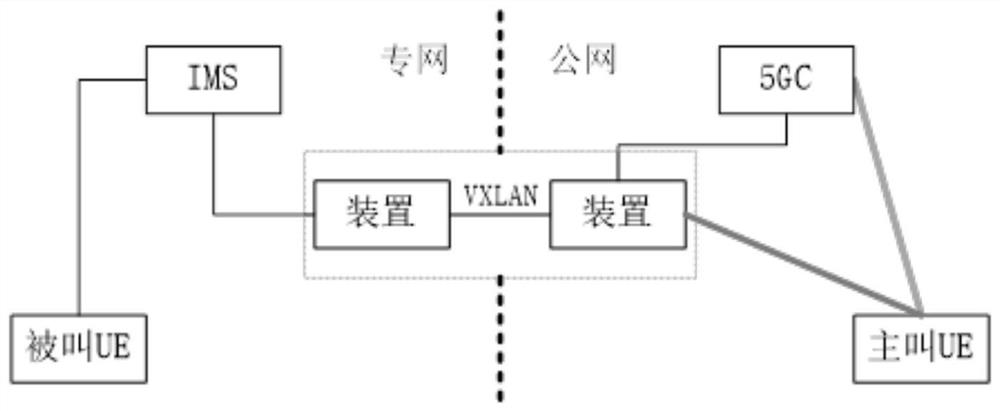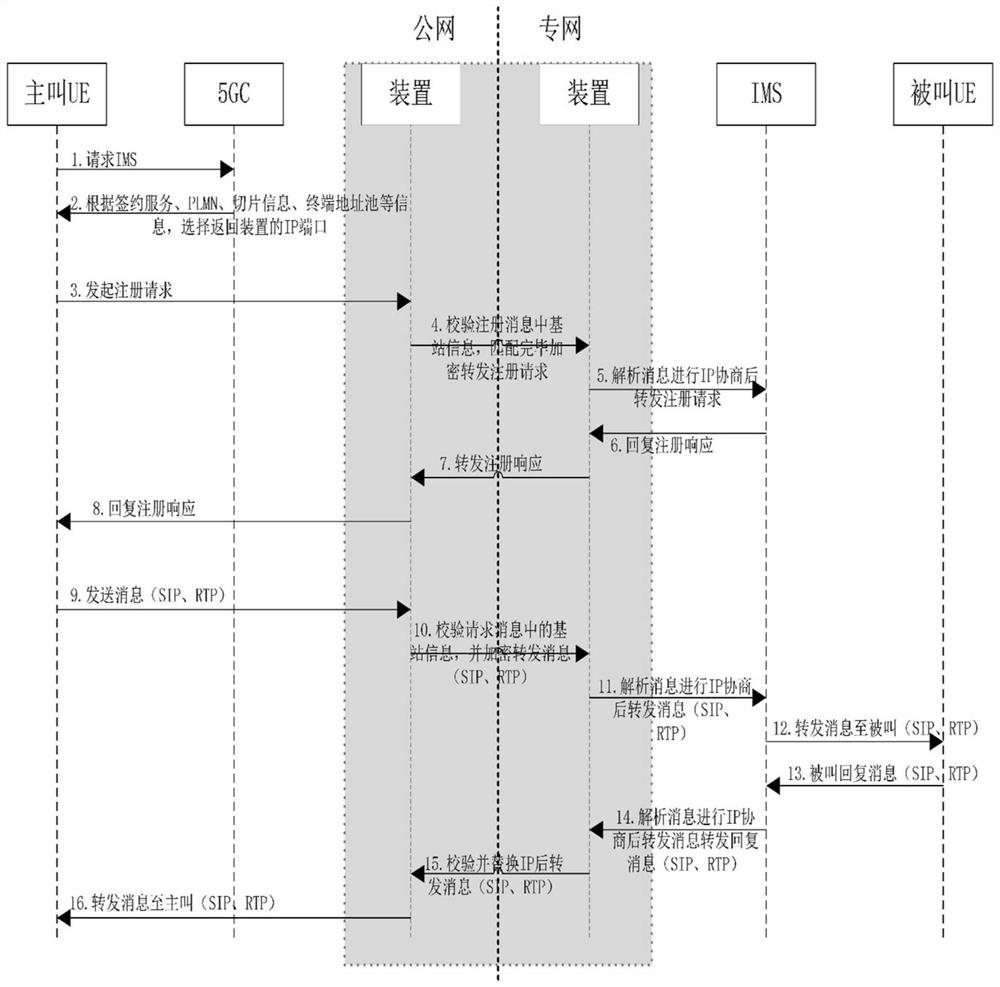IMS (IP Multimedia Subsystem) communication method based on superposition of public network and private network
A communication method and technology for a private network, applied in the field of communication, can solve the problem that public network users cannot directly access the private network, and achieve the effects of reducing the pressure of network resource allocation, improving network security, and protecting privacy.
- Summary
- Abstract
- Description
- Claims
- Application Information
AI Technical Summary
Problems solved by technology
Method used
Image
Examples
Embodiment Construction
[0079] In order to make the purpose, technical solution and advantages of the present application clearer, the technical solution of the present application will be clearly and completely described below in conjunction with specific embodiments of the present application and corresponding drawings. Apparently, the described embodiments are only some of the embodiments of the present application, rather than all the embodiments. Based on the embodiments in this application, all other embodiments obtained by persons of ordinary skill in the art without making creative efforts belong to the scope of protection of this application.
[0080] Please refer to figure 1 , the application provides an IMS communication method based on the superposition of public network and private network, comprising the following steps:
[0081] S110: Deploy the first VXLAN device on the public network side.
[0082] S120: Deploy a second VXLAN device connected to the first VXLAN device through a UDP...
PUM
 Login to View More
Login to View More Abstract
Description
Claims
Application Information
 Login to View More
Login to View More - R&D
- Intellectual Property
- Life Sciences
- Materials
- Tech Scout
- Unparalleled Data Quality
- Higher Quality Content
- 60% Fewer Hallucinations
Browse by: Latest US Patents, China's latest patents, Technical Efficacy Thesaurus, Application Domain, Technology Topic, Popular Technical Reports.
© 2025 PatSnap. All rights reserved.Legal|Privacy policy|Modern Slavery Act Transparency Statement|Sitemap|About US| Contact US: help@patsnap.com



